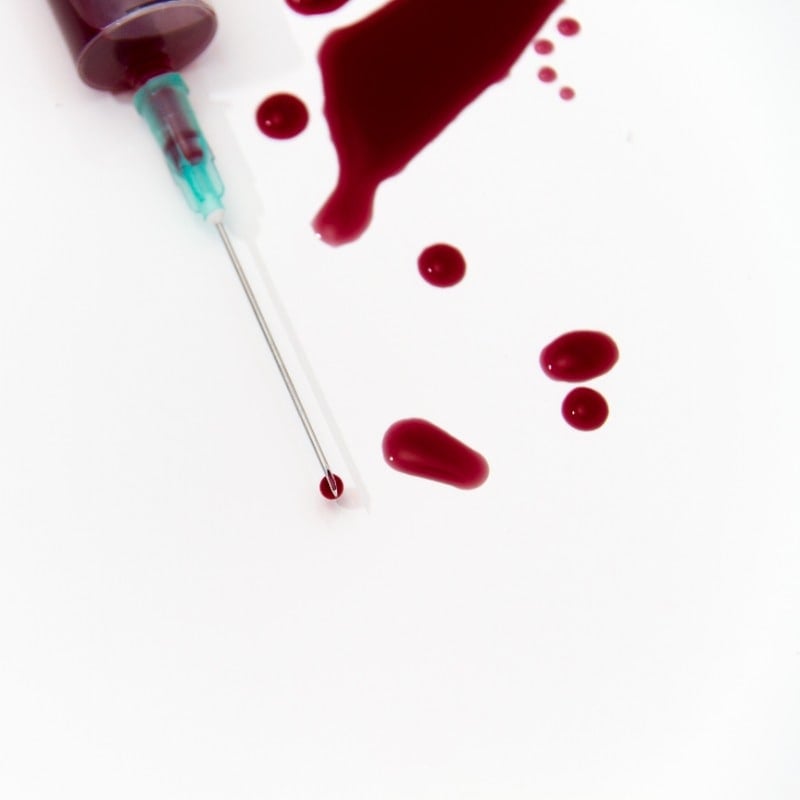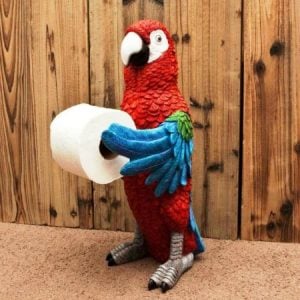
Your Bird is Bleeding or Oil Soaked – Now What?
Last Updated on by Mitch Rezman
Let’s circle back to first aid. Now that you’ve taken the time to build your own bird first aid kit, (you did right?) it’s important to remember the basics.
Once you’ve assembled all the tools for your bird first aid kit you should wash them with antibacterial soap or clean them with a steam cleaner and then wrap them in washcloths prior to storage.
This will help reduce the chance of bacteria possibly promoting a zootonic disease (diseases passed from humans to animals and vice versa).
I’m sure many of you seen the “mayhem” commercial by Allstate which does a nice job of bringing what disasters could befall you on any given day, into plain mental sight. Let’s discuss some mayhem your bird “may” encounter in it’s lifetime, measured in decades.
Please keep in mind, we’re giving you the tools to perform bird first aid, not avian surgery. If your bird suffers a broken bone or severe burn, an emergency vet visit is in order. If you can fix things – fix things, like broken blood feathers. But if the bird is to end up at the vet use this information to stabilize the animal, make sure the injury is stabilized. Then get the bird toweled, warmed and crated and go!
Blood Feathers – the most common bird first aid issue you will encounter.
A bird can bleed to death from a single broken blood feather. One thing you’ll want to know how to deal with in your bird’s lifetime is a broken blood feather. There’s too many feathers and they come back on a regular basis, not to break occasionally – I guarantee it will happen to your bird in it’s lifetime. It’s a simple fix, learn how to fix a blood feather here.
Note: There is new information on handling broken blood feathers. It is now considered that not all broken blood feathers need pulling, the thought is that pulling them out can cause more trouble than leaving them in, IF, they can be stopped from continued bleeding. Packing the broken feather stub with cornstarch, flour or blood stop powder and seeing if this halts it before pursuing pulling it out may be all that is needed. The broken feather may clot and can be left alone unless it contues to bleed or the bird picks at it.
Bleeding of any kind
We’d much rather see you gently grind a bird’s toenails with an electric nail trimmer rather than clipping them. Just 15 or 20 drops of blood, about a teaspoon, represents approximately 10% of an average size cockatiel’s total blood volume in their system. Some kwik stop clotting gel is very effective in stopping a bleeding bird’s nail while providing soothing antiseptic relief. If you don’t have any on hand go to the pantry and get some cornstarch or go into the bathroom, grab a bar of soap and drag the bleeding nail across the bar soap. The latter two solutions will stop the bleeding but not reduce the pain.
Cross species bites
These can be devastating for a bird and I talk about a cockatiel that I had many, many years ago getting attacked by one of my dogs and surviving – here. Dog and cat bites to your bird can cause infection from even small puncture wounds or worse yet, major internal injuries and multiple bone fractures. IF you feel the bird can be saved, do the drill – stabilize the bird, make sure the injury is stabilized and get the bird toweled,warmed, crated and get to the vet!
Fractured or broken bones
We talked about broken bones and stabilizing the bird prior to seeking veterinary help, a couple of weeks ago. I want to touch on some other points. There are so many ways, in or out of the cage, a bird can break a bone, I’m amazed it doesn’t happen more often. Wing feathers get caught in cage bars. Toes get caught in the crack of an un-inspected wood toy. You forget to notice the bird on the top of the bathroom cabinet door when you close it. Sometimes you’re part of the trauma, sometimes you have to be a detective.
If you see a bird’s wing drooping or your bird can’t move it’s wing, you’re probably dealing with a broken wing bone. If a leg looks like is in a position that’s not normal or the leg is swollen or bruised, you’re probably dealing with a broken leg bone. Know what you’re dealing with so you know how to deal with it. Learn how to deal with broken bird bones here
Overheating
Once again the possibilities are endless, from a failed air-conditioner to a bird left in a hot car while you’re running errands to and from the vet. What is your bird’s temperature comfort range? If you’re comfortable, your bird’s comfortable, if you’re hot, your bird’s hot.
Pedialyte, a pediatric oral electrolyte solution administered with an eye-dropper is ideal for bird re-hydration. Gatorade works too. A teaspoon of salt in a pint of water will work in a pinch. Mist entire bird with water. Reduce the heat if at all possible with an air conditioner.
Burns
Dinner cooking on the stove, hot soup or frying chicken are potential bird burn targets. Water based burns should be misted with cool water or the bird should be simply placed under a faucet with cool running water. For foot and leg burns, dip the extremity into a cup of ice water. Use a topical antibiotic cream, nothing with grease, especially things like butter. Anything greasy will retain heat in the burn wound.
Conversely if you’re dealing with a bird who has sustained a grease burn start with cornstarch to wick the oil away from the birds body and then run the bird under cold water.
Chemical or acid burns – think toilet bowl cleaner – flush the bird with cold water and then apply a mixture of baking soda and water as a light paste.
Alkali burns on birds from household cleaners that contain things like ammonia should be treated with running water and then vinegar to neutralize the chemical.
If your bird burnt its beak while chewing on the electrical cord that it’s been nibbling on for the past two months, you’re on your own. We haven’t figured out how to treat mouth burns.
Oil
My all-time favorite scenario is that you are bird smart enough to make sure your bird is not the kitchen while you cook. With dinner over, your bird is back in the kitchen with you, helping you wash dishes on your shoulder and expecting a sink bath.
While you’re thinking about how much fun the bath is going to be in just a few minutes, your bird decides that it wants to bathe now. In less than 1.5 seconds it hops off your shoulder (who needs flight feathers?), lands on the cool edge of the pot on the stove and plunges its head into the very cool sauce pan of oil that you used to fry tonight’s chicken thinking it’s just another place to bathe. Let’s allow that visual to sink in for a moment.
You will not panic because you read these newsletters weekly. You will calmly grab and towel your bird. Start by getting the oil out of the nares (nose or nasal passages) mouth and eyes with a moist Q-tip. Then clear a compartment in the sink, fill it with warm water and a few drops of dish soap. Original Dawn Detergent is the oil removing soap of choice. They use it during oil spill clean ups with wild birds.
Keep washing the bird, moving soapy water in the direction of the feather growth. Keep dipping the bird in and out of the water, then rinse and repeat. Not a bad idea to use a blow dryer on low when the oil is gone and even if it’s in the summer get that winter cage heater warmed up so the area around the cage is in the upper 80s until your feathered fluff ball is a fluff ball again. They will need to do some heavy preening for awhile to get their feathers back to normal.
Squawk at you next week
written by Mitch Rezman
approved by Catherine Tobsing
Have something to say or want to give us some feedback? You can reply to this email or leave a comment below.
Author Profile
Latest entries
 The Traveling BirdJune 26, 2025Can You Name 5 Parrot Species That Are Living Wild in the USA?
The Traveling BirdJune 26, 2025Can You Name 5 Parrot Species That Are Living Wild in the USA? Bird BehaviorJune 26, 2025How is it Parrots Are Problem Solvers Social Animals and Even Use Tools?
Bird BehaviorJune 26, 2025How is it Parrots Are Problem Solvers Social Animals and Even Use Tools? Bird & Parrot AnatomyJune 25, 2025How a Tiny Chemical Modification Makes Parrots Nature’s Living Paintings
Bird & Parrot AnatomyJune 25, 2025How a Tiny Chemical Modification Makes Parrots Nature’s Living Paintings PigeonsJune 20, 2025How Do Parrots Thrive in Cities Outside Their Native Habitats?
PigeonsJune 20, 2025How Do Parrots Thrive in Cities Outside Their Native Habitats?


